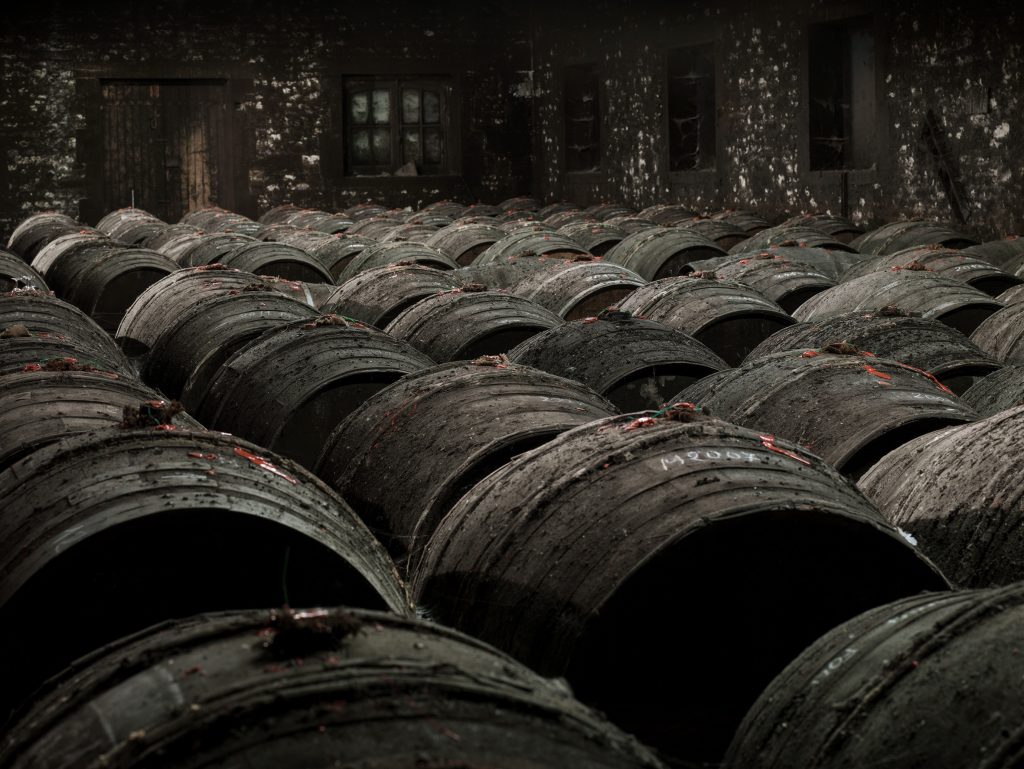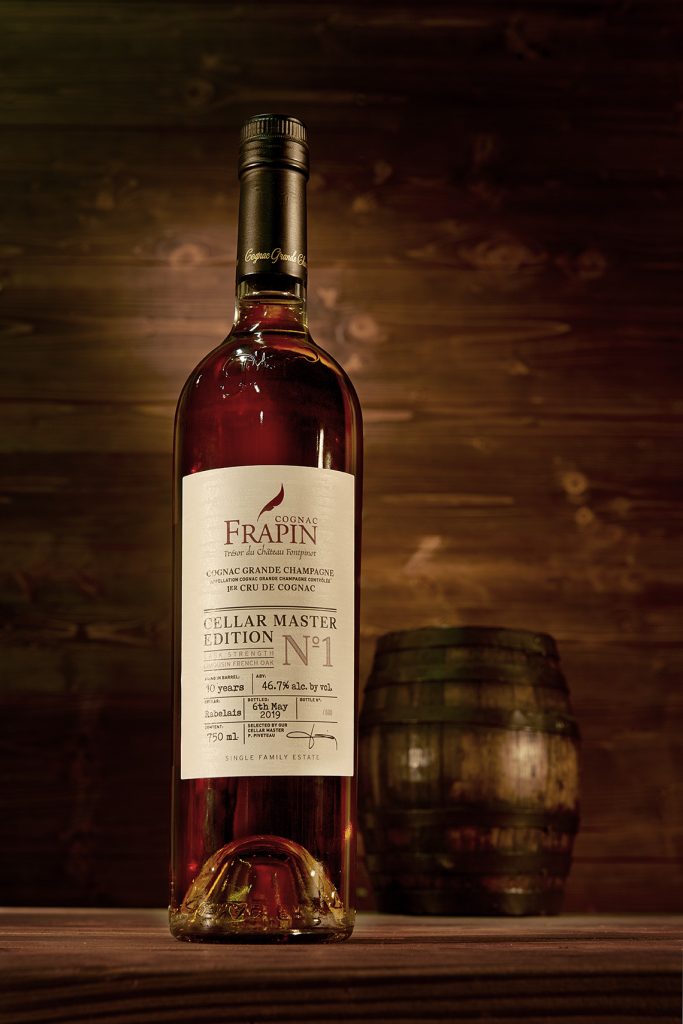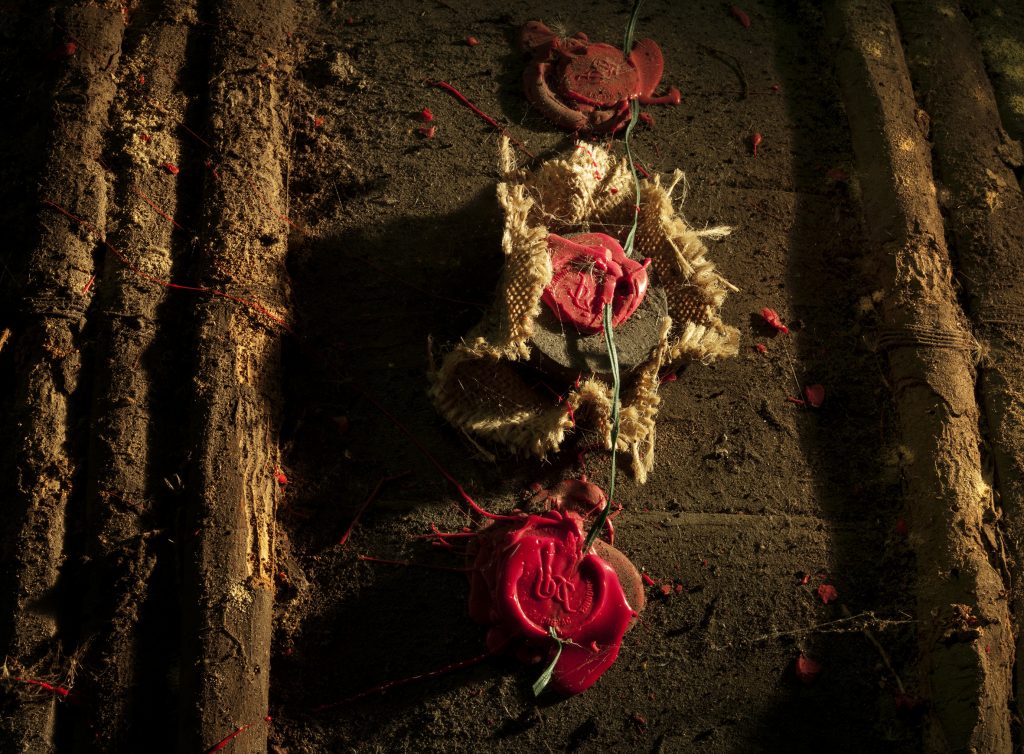Patrice Piveteau has devoted his life to Cognac and the past 29 years to Frapin. It has taken that long to learn the fields, the grapes, the terroir, and the tradition of one of Cognac’s oldest houses. And now, after dedicating decades to maintaining and perfecting the “Frapin style,” he has unveiled an offering with his own influence, the Frapin Cellar Master Edition No° 1 Cognac–the subject of this week’s Bottle Breakdown.
With his first Cellar Master Edition, Piveteau wanted to “explore a new aromatic palette.” Therefore, he chose to release a cask strength variety, something rarely seen in the Cognac world. The result is more than just a taste or an aroma, it’s an experience. As Patrice explains, it’s like “sipping straight from the barrel with a straw.”
“After working with Frapin for the past 29 years, I felt comfortable and brave enough to take the Frapin style to the next level by adding my strong influence on it,” explained Patrice. In this week’s Bottle Breakdown, he takes us through the tradition, innovation and influence that led to the creation of Frapin Cellar Master Edition No° 1 Cognac.

Spirited Zine: Just to start, can you tell us about your first memory of Cognac? And how that influences the way you approach making Cognac Frapin?
Patrice Piveteau: Growing up, my parents were winegrowers in the Cognac area, so I have always been around Cognac, through watching, listening and talking to those around me. When it was time for me to go to school, I studied in France in the Champagne area and in Bordeaux for many years. After that, I worked in the world of wine in Bergerac where I produced dry white wines and red wines, before joining Cognac Frapin in 1991. This gave me a lot of time to get to know the stock and the “Frapin style” of making the Cognac. What I have learned from my upbringing and start of my career in Cognac, is that the only way to know when a Cognac is finished aging and is ready to be bottled is by tasting it. To produce Cognac, there is no book, so I taste every cask rows every six months, because in my head I know what type of Cognac I want to produce, so I’ve learned from my past experiences that it’s a reverse of the scientific way.
SZ: Frapin is harvested, distilled, and aged all within Cognac’s Grande Champagne Domaine. Can you tell us about Frapin’s unique terroir and the flavors and aromas it imparts on the Cognac?
PP: Grande Champagne is the first cru of Cognac thanks to its subsoil. According to the Bureau National Interprofessionnel du Cognac (BNIC), Grande Champagne gives a wine with the most aromatic richness and the finest eaux-de-vie. Frapin has 600 acres in Grande Champagne in one block, making it the biggest vineyard in all of Grande Champagne.
The two most important characteristics of the Grande Champagne area that make it unique are the vast hillsides and chalky subsoil. The crumbly chalk enables a natural hydric feeding system to the vines, like a sponge soaking up all of the water. During the summer when it’s very hot, it facilitates a regular supply of water directly to the grapes, helping them grow before later being pressed. The soils of Grande Champagne produce Cognac of extreme finesse, that are usually floral, light, and require a long aging period to hit maturity, which is one reason as to why we aged ours for many years beyond réglementation.
In the Cellar Master Edition blend, aged for over 10 years, you will find those floral dominant features that evolve into fruity flavors of apricot, citrus, finishing with ripened plums and spices, expressing the terroir beautifully.
SZ: You’re tasked with creating Cognacs that continue to keep the Frapin style year after year. How does that impact your creative process when it comes to creating a new product like the Cellar Master Edition No° 1?
PP: The “Frapin style” is the terroir, tradition, complexity, and pleasure of Frapin Cognacs. Because Cognac Frapin is specialized in the niche market of “high quality cognac,” I create Cognacs that continue to keep the “Frapin style” year after year, which combines the accumulated knowledge of a family settled in Charente area for a long period, which is my obligation to the family. All of the grapes for our Cognacs come only from our vineyard in the heart of the Grande Champagne Area, and we still age it in centuries-old cellars like the former generations. Even though the production of our Cognacs are largely controlled to maintain a certain style, there is still a possibility to produce something different, to take risks and use special techniques. I am able to express my creativity by experimenting with distillation as each single passe is different and controlled by a human being (no computer!), harvest dates, grape varietals to blend with perhaps, and by adding modern technology and techniques to our ancient process. I combine new techniques with the existing techniques. I analyze the soils of our vines to understand better the supply of water. In addition to what I just mentioned, my creative process is important because I can play with various factors such as, the 2 different kinds of terroir even if they are similar (mainly varying in the amount of limestone in the soil), distillation with lees, humid or dry cellars, and huge stock to use for the blending. So, although the process is controlled to facilitate a certain outcome, I am still able to express my creativity through steps along the way. Overall, there is always room for innovation and experiments but what makes Cognac Frapin so iconic is the strong family tradition that is still used while incorporating modern knowledge to better understand why things happen and using that knowledge to adapt for the future.

SZ: You’ve been working for Frapin since 1991. Why did you feel now is the right time to release the first Cellar Master Edition?
PP: I joined Frapin back in 1991, where I started as Vineyard Manager. I worked very hard to be promoted to Master Distiller and eventually to Cellar Master. I am also the 600-acre estate’s Managing Director and Supervisor of the estate’s dry and humid aging cellars. I feel as though now I am familiar enough with the Frapin style to be able to put my own spin on it while keeping it in line with the generations of distilling the highest level of quality decade after decade. My years of training here have fine-tuned my palate to be so careful.
SZ: This is a single cask edition of Frapin. How did you select the cask and what is unique about its character?
PP: I specifically selected the single cask for the distinctive character it would bring to the cognac. After leaving the blend to age in French Limousin oak for over 10 years in our humid cellar, I decided to release the cognac under natural strength, using no filtration or chilling, to keep the spirit’s purity. The Limousin oak strengthens the Cognac but helps it be more balanced, as the Cognac extracts more tannins. At Cognac Frapin, we use 3 different types of cellar: first we age in a new cask (we consider a new cask is a cask between 1 year till 5 years old) to get more color and aromas. Next, we age it in an older cask (a cask between 5 till 15 years old) to get color and aromas but less than a new one, giving time to see the evolution of the Cognac year after year. Then we finish in a very old cask.
SZ: The Frapin Cellar Master Edition No° 1 was aged for 10 years in the “chai Francois Rabelais.” How is aging in a “wet” or “humid” cellar different from aging in a dry one?
PP: There are two different types of cellars for Cognac– dry and wet, which impacts the rate of water and alcohol evaporation. In a very humid cellar like wet cellars in a basement, not much water will evaporate from the barrel compared to alcohol, progressing the flavors to taste more mature and well rounded. Generally, we lose 2% of the volume of each cask in a humid cellar. If it’s a dry cellar, and if the sun is shining a lot, the temperature inside will be higher, and you will lose more water than alcohol, generally around 4% of evaporation. By aging the Cellar Master Edition in our humid cellar, the palate is balanced and lively; its freshness is then followed by warm amplitude and inimitable roundness.
SZ: I feel like it’s very rare to see a cask strength Cognac. So why did you decide to release this edition under natural strength?
PP: I decided to bottle the Cellar Master Edition No° 1 at cask strength to retain its robust and smooth character as it bears the seal of our quest for authentic Cognacs. By bottling it at cask strength, it offers an experience akin to sipping straight from the barrel with a straw, expressing its most pure and fullest natural potential. The idea here is to explore a new aromatic palette with the choice of a special cask, cask strength, which enables me to illustrate the diversity of Cognac, the diversity of what we can do.
SZ: What motivated you to create the Cellar Master Edition?
PP: When I first thought of creating a Cellar Master Edition blend, I wanted it to exemplify pure, authentic Cognac. After working with Frapin for the past 29 years, I felt comfortable and brave enough to take the Frapin style to the next level by adding my strong influence on it. That is why I decided to bottle it at cask strength so it would retain its robust and smooth character, like an authentic Cognac should. As I mentioned in the question above, what I wanted to achieve by creating the Cellar Master Edition is to explore a new aromatic palette with the choice of a special cask, cask strength, which enabled me to illustrate the diversity of Cognac, the diversity of what we can do.
Cellar Master Edition No° 1 is very much something of your own creation. How do you manage to express both yourself and the hundreds of years of tradition behind Frapin in one Cognac?
I am able to express myself within the Cellar Master blend while still keeping the “Frapin style” by combining the ancient techniques that the Frapin family have been using for generations with modern techniques that I have learned during my education and years of experience. Like I mentioned in a previous question, during the entire process of making the Cognac, I use modern influences while still only harvesting from the same vineyard that Cognac Frapin has been harvesting from since the beginning, still double distilling the liquid, leaving the Cognac to maturate on the lees, and I still aim for it to have those overall classic Frapin characteristics present. For example, I wanted the Cellar Master to finish typical of Frapin Cognac, so I left the finish very long, but I bottled it with the alcohol by volume higher to give it more strength and to show purity, uncommon of Frapin Cognacs. I also expressed myself in this bottle by tasting the aging Cognac regularly, until I decided that it’s ready to be bottled, based on the taste, color, and nose expectations I had in my head all along.
How do you recommend enjoying Frapin Cellar Master Edition No° 1 and what should be paired with it?
I feel extremely proud to have put so much passion into a Cognac to see it receive a score of 96/100 at the 2020 Ultimate Spirits Challenge, and to be placed on the “Top 100 spirits of 2020” list by Ultimate Spirit Challenge. Therefore, my favorite way to enjoy Frapin Cellar Master is to sip it neat but it is possible to pair it with delicious food such as:
– Duck with a truffle infused sauce served with potato gratin
– Veal escalope with grilled vegetables
– Red mullet and langoustines cooked with saffron and served with rice



